Taxes
If your business is registered for VAT, you can apply taxes to the expenses recorded in Zoho Expense. Here is a detailed overview about VAT in Zoho Expense.
Note: Your organization’s location should be set as United Arab Emirates while signing up for Zoho Expense to enable VAT.
Enable VAT
Once you enable VAT, you will be able to apply the relevant VAT type and the corresponding VAT rate to your expenses. You can also gain insights of your taxable expenses by generating tax analytics.
To enable VAT:
- Click Admin View.
- Click the Gear icon at the top right corner of the page.
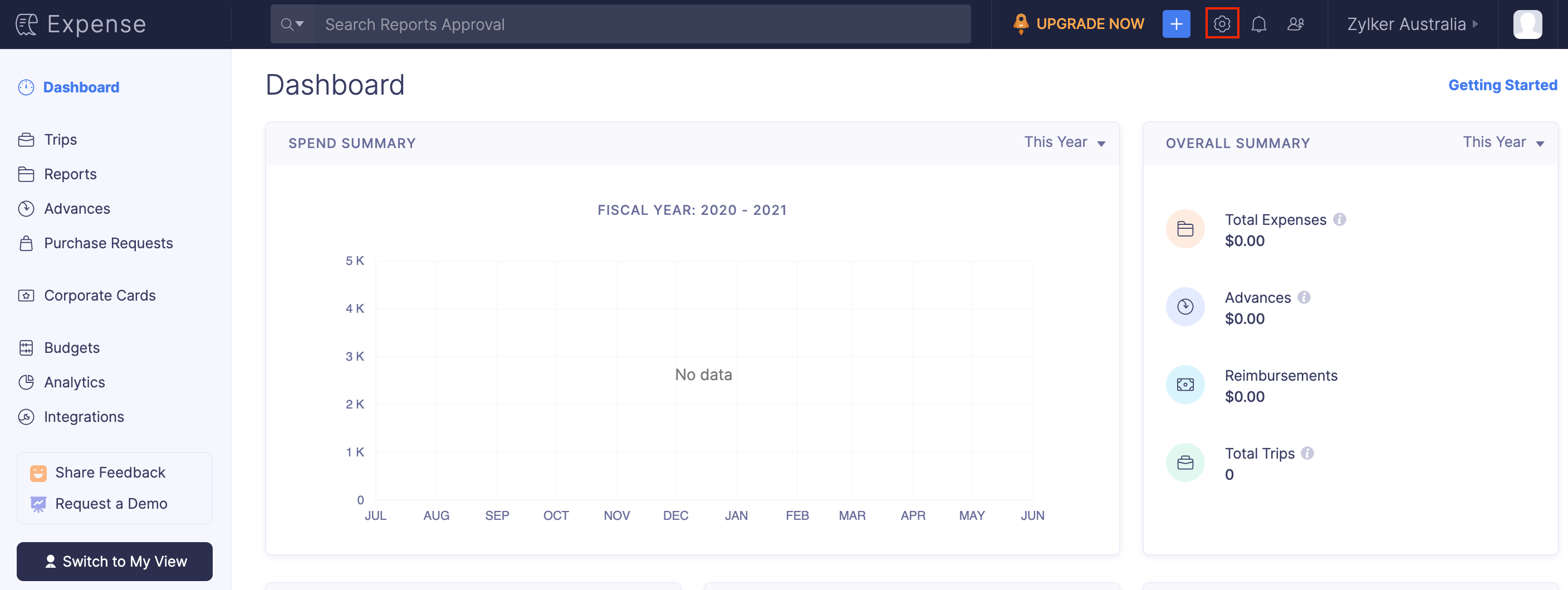
- Go to Taxes under Organization.
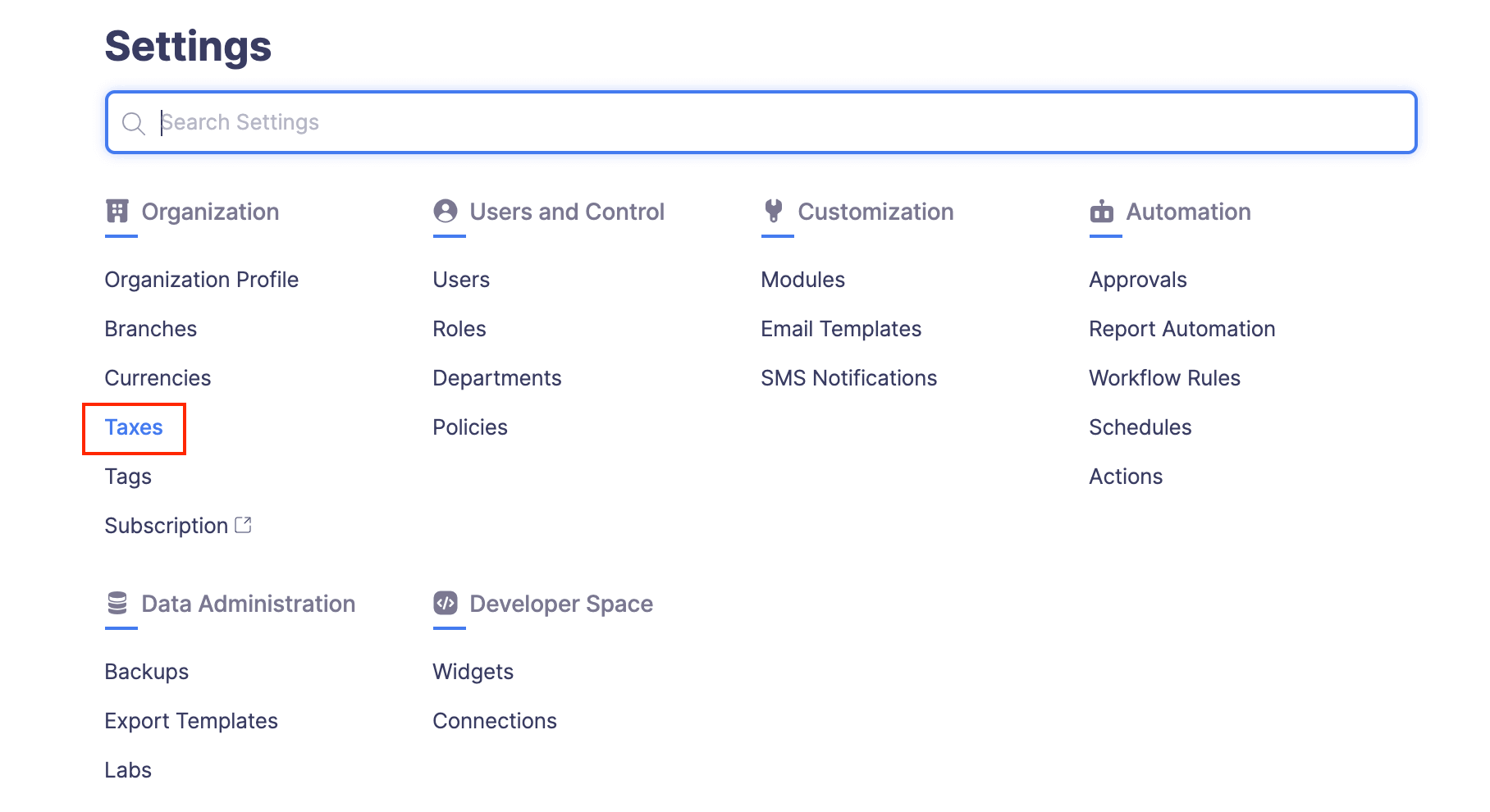
- Mark the My business is registered for VAT option.
- Enter the Tax Registration Number.
- Mark Enable trade with contacts outside UAE if you incur expenses in the GCC countries other than the UAE.
- Click Save. VAT will be enabled for your organization.
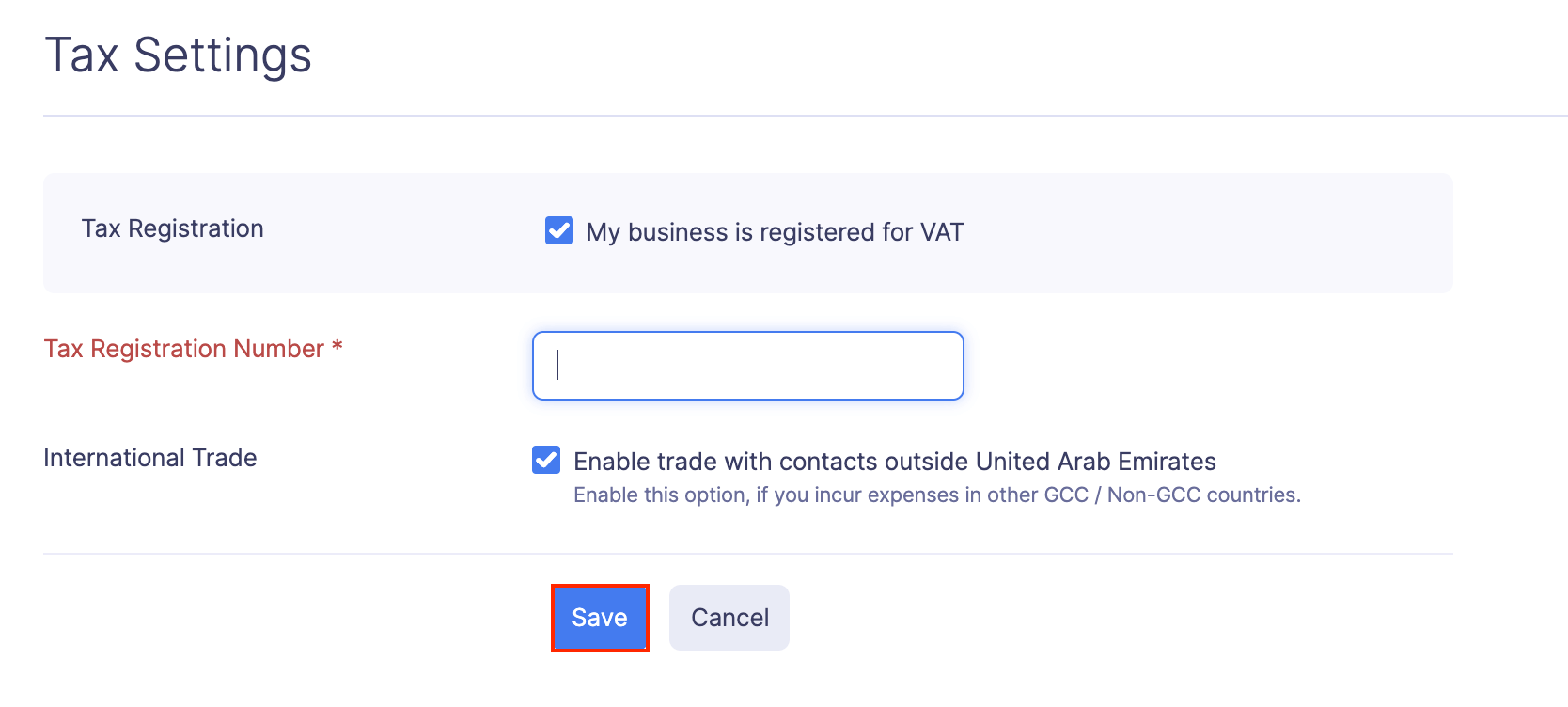
Note: You can add a new tax rate only if you check Enable trade with contacts outside UAE.
Tax Types
After you enable VAT, you will be able to choose a Tax Type while creating your expenses. Here are the different tax types:
| Tax Type | Description |
|---|---|
| Domestic Expense | Expenses that are incurred within UAE. |
| Within GCC | Expenses that are incurred in GCC countries. |
| Outside the scope of VAT | Expenses that do not belong to the above tax types. |
Note: Mileage and Per Diem expenses will be considered as outside the scope of VAT by default.
Add a New Tax
You can use the default Standard Rate and Zero Rate provided by Zoho Expense for the expenses incurred within UAE. When you incur an expense from other GCC countries, you have to abide by their tax rates. So, you can create a new tax rate. To do this:
- Click Admin View.
- Click the Gear icon at the top right corner of the page.

- Go to Taxes under Organization.

- Click + New Tax at the top right corner.

- Enter the Tax name, Tax Rate and choose the GCC member state.
- Click Save.
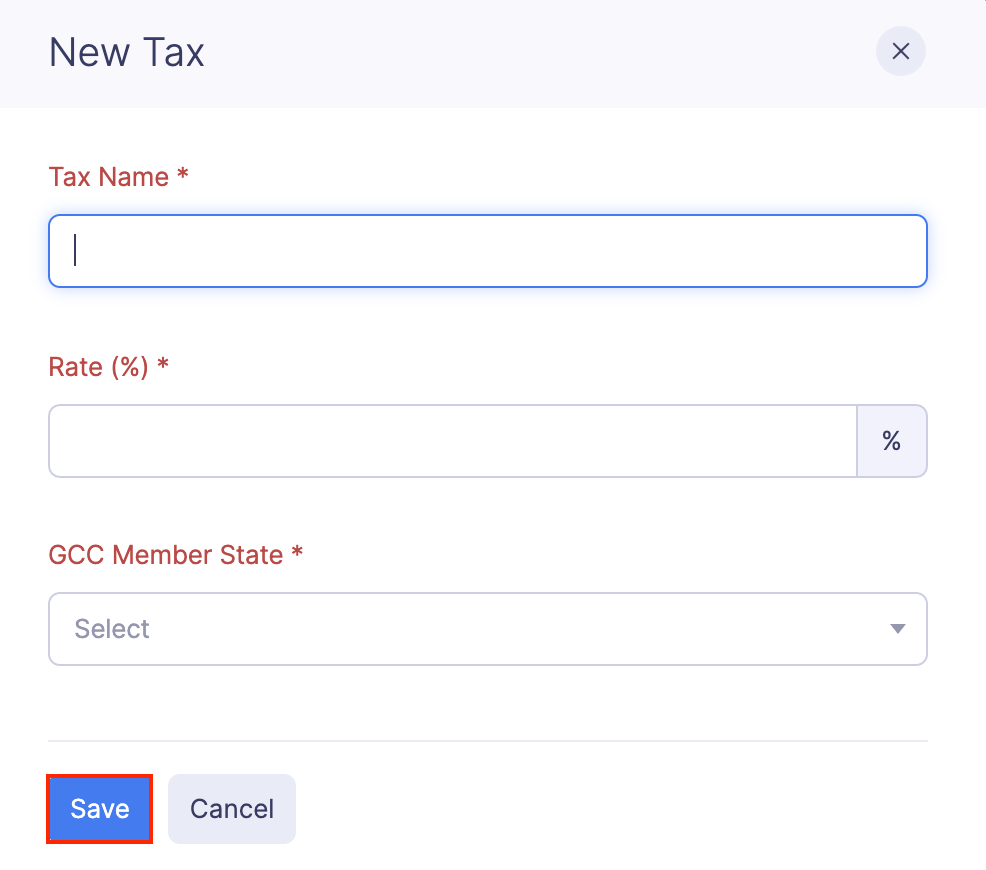
Your new tax rate will be added to Zoho Expense.
Note: Newly created taxes can be associated only with expenses incurred in GCC countries other than the UAE.
Edit a Tax
If you incur an expense from another country who has recently updated their tax laws, you will have to edit the existing tax rates in Zoho Expense. To edit a tax rate:
- Click Admin View.
- Click the Gear icon at the top right corner of the page.

- Go to Taxes under Organization.

- Click the More icon at the right corner of the tax rate you want to edit.
- Click Edit.

- Enter the new tax rate under Rate.
- Click Save.
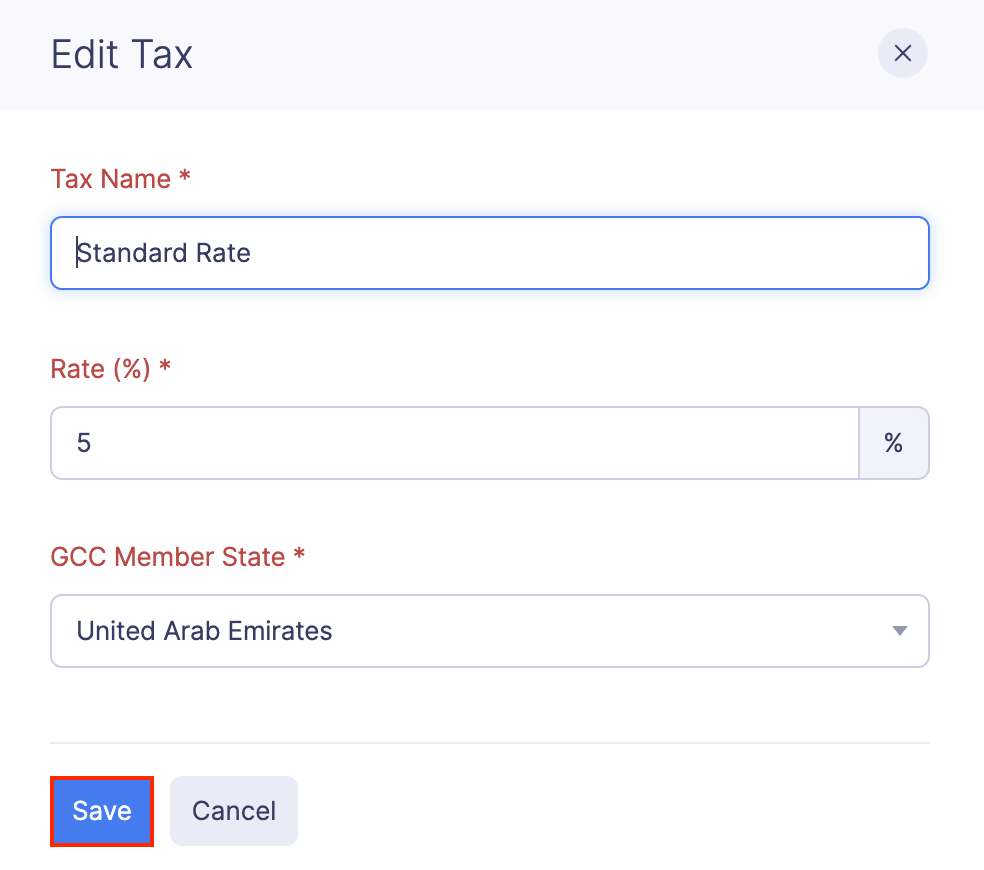
Delete a Tax
If you’ve created a tax and later found it unnecessary, you can delete it.
Note: You cannot delete the Standard Rate and the Zero Rate tax. Similarly, you cannot delete the taxes that are already associated with expenses. However, if you want to delete the associated taxes, you will have to delete all the expenses that have been associated.
To delete a tax:
- Click Admin View.
- Click the Gear icon at the top right corner of the page.

- Go to Taxes under Organization.

- Click the More icon at the right corner of the tax rate you want to delete.
- Select Delete.

- Click Delete to delete the tax.
Disable VAT
You will be able to disable VAT only after you delete all the existing VAT related expenses.
To disable VAT:
- Click Admin View.
- Click the Gear icon at the top right corner of the page.

- Go to Taxes under Organization.

- Click the Gear icon at the top right corner.

- Uncheck My business is registered for VAT.
- Click Save.
Now, VAT will be disabled for your Zoho Expense organization.